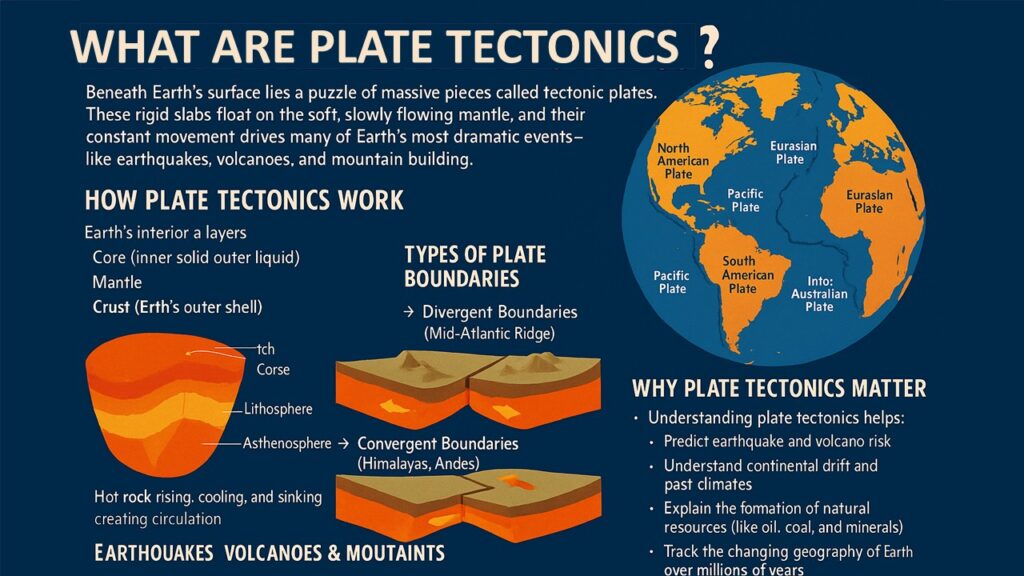What Are Plate Tectonics?
Beneath Earth’s surface lies a puzzle of gigantic pieces called tectonic plates. These rigid plates float on the slowly moving mantle, and their constant shifting is responsible for many dramatic Earth processes.
There are seven major plates and numerous smaller ones, all interacting at boundaries. This system is called plate tectonics, and it’s the engine behind much of Earth’s surface activity.

How Plate Tectonics Work
Earth’s interior is divided into:
- Core (inner and outer)
- Mantle
- Crust
The crust and the upper part of the mantle form the lithosphere, which breaks into tectonic plates. These plates float on the more flexible asthenosphere below and move due to mantle convection—the flow of heat from the core.
Types of Plate Boundaries
1. Divergent Boundaries
Plates move apart (e.g., Mid-Atlantic Ridge)
- Result: new crust, underwater volcanoes, rift valleys
2. Convergent Boundaries
Plates collide (e.g., Himalayas, Andes)
- Result: mountains, subduction zones, volcanoes, deep ocean trenches
3. Transform Boundaries
Plates slide past each other (e.g., San Andreas Fault)
- Result: earthquakes
Earthquakes, Volcanoes & Mountains
Many natural disasters and landforms can be explained by plate tectonics:
- Earthquakes occur along faults where plates grind together.
- Volcanoes often form at subduction zones or mid-ocean ridges.
- Mountains rise when continental plates crash and crumple upward.
Example: The Himalayas are still rising as the Indian plate continues to push into the Eurasian plate!
Why Plate Tectonics Matter
Understanding plate tectonics helps us:
- Predict earthquake and volcano risk zones
- Understand continental drift and past climates
- Explain the formation of natural resources (like oil, coal, and minerals)
- Track the changing geography of Earth over millions of years
It’s not just science—it’s essential to how we build cities, respond to natural disasters, and study Earth’s future.
Fun Fact: The Supercontinents
Over Earth’s history, all continents have been joined together in “supercontinents” like Pangaea. Plate tectonics slowly broke them apart, and they continue to drift—meaning in 250 million years, we might have a new supercontinent!
Have you ever felt an earthquake or seen a volcano? Share your experience in the comments—let’s talk tectonics!




